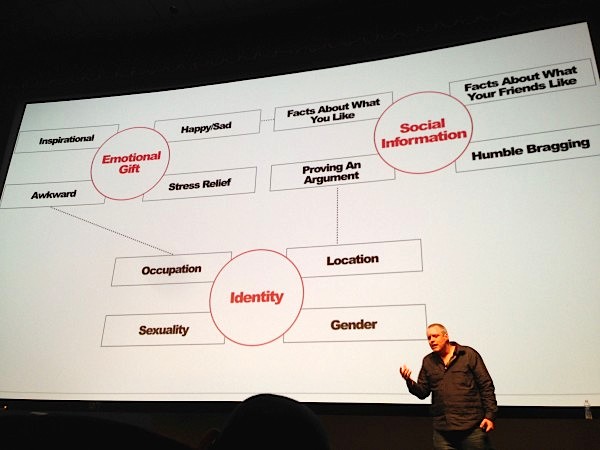Given that Brunico Communications is a trade publication based in Toronto, Canada, one might wonder what they are doing hosting their Stream Market conference in Santa Monica, CA. As it turns out, they provide one of the best and most concise explanations of what is going on in the world of streaming media right now. President/CEO Russell Goldstein opened the market with a challenge to every attendee: “Find the opportunity!” Then he turned things over to Emcee Jesse Cleverly (Creative Director for Wildseed Studios) who served as tour guide for two adventure-filled days and an abundance of opportunities to choose from.
Elan Lee, Chief Design Officer for Xbox Studios, walked us through a series of transmedia projects that helped introduce the focus of Microsoft’s programming directive: Content is King. Yes, I know, everybody says that. But Lee broke it down into four subcategories that can serve as a guidepost to content creators:
- Use the emotional language of the target audience
- Create elements of everyday magic
- Work simultaneously at a big and small scale in your story structure
- Embrace technology in every aspect of your projects
Internet TV
A panel featuring online content creators included singer/songwriter Tyler Ward, vlogger Meg DeAngelis and comediennes Grace Helbig and Mamrie Hart. The discussion focused on the ways that each of them is a distinct “brand” and the nature of the business model puts them in the C-Suite role that the studios and networks have always occupied in our creative lives. In this case, C=control over your career and the direction it takes. Last year, Helbig and Hart joined forces on a feature length film called Camp Takota. They released it through Video on Demand (VOD) and made their money back in the first five days. (http://camptakota.com) They have book deals, music labels and/or endorsement contracts. But the important thing for artists to understand is that these digital stars are making millions of dollars doing what they love in exactly the way they want to do it – with no outside intervention. While it may seem like a daunting challenge to begin, you can get a feel for it by watching the channels these four produce on YouTube.
It goes without saying that all of the major networks, studios and production companies have digital initiatives and power plays in the works. Each of them is finding their own version of a distribution platform that will create a direct connection between their company and the audience. That being said, they are taking a lot of their creative steps from the same playbook that the aforementioned digital stars are creating.
Millennials
Jamie Gutfreund of The Intelligence Group at CAA gave a brilliant analysis of Millennials in her presentation on Navigating the New Pop-Scape. There are 2 billion Millennials in the world and they all think that their personal brand is more important than any brand you offer to them. 80% of them sleep with their phones. They don’t care about professional reviewers because they’d rather hear what their friends think about something. In essence, no matter what you create, from their point of view it’s all about THEIR social currency. They are what they read, what they buy, what they watch and what they share. 49% of them want to be able to discover something before it becomes popular. 70% of them time-shift their content consumption from when it is posted to when they choose to use it. They love mash up culture (ie: The Duck Dynasty family being present at the State of the Union speech) and they like to Mix & Mash everything in a way that combines highbrow and lowbrow culture (combining TED Talks with the wit and wisdom of Beyoncé). This audience has shifted from passive to participatory and there is no going back.

The extraordinary Ze Frank, Executive Vice President of Video at BuzzFeed explained the process that enabled their team to create 1600 videos that accumulated 1.4 BILLION views in just two years. They approach videos as a proxy for communication and divide three separate categories that explain why people share videos with others: Identity, Emotional Gift or Social Information. He hires producers that are “generalists” and can conceive, produce, shoot and edit their own videos.
MCNs
The most challenging session to sit through was a panel about Multi-Channel Networks (MCNs). This business model emerged when an enterprising group of managerial types decided to aggregate video content into a network model that strongly resembles the old business model of our broadcast/cable networks. MCNs like Machinima focused on a specific audience – gamers – while Maker Studios was more broadly organized around the top hit video stars. (Maker Studios was recently acquired by Disney for $500 million against an additional $450 million.) The MCN model is exceptionally beneficial to the digital talent because it creates a scenario where smaller digital artists can be discovered by audiences whose views can build them into digital stars. That being said, when asked the question of how someone can form a new MCN today the panelists claimed that it’s too late for anyone new to enter this field. Their comments suggest that they made it up the ladder to the top, but then pulled up the ladder so no one else can follow. On the contrary, one of the greatest opportunities right now is the creation of new MCNs that serve niche audiences in much the same way as Machinima has done.
Stream Market has just completed its second year and will most likely return next spring. Anyone who wants to operate in the online streaming space should plan to attend this very beneficial event. In the meantime, Brunico offers a free subscription to their must-read daily newsletter: http://streamdaily.tv.
